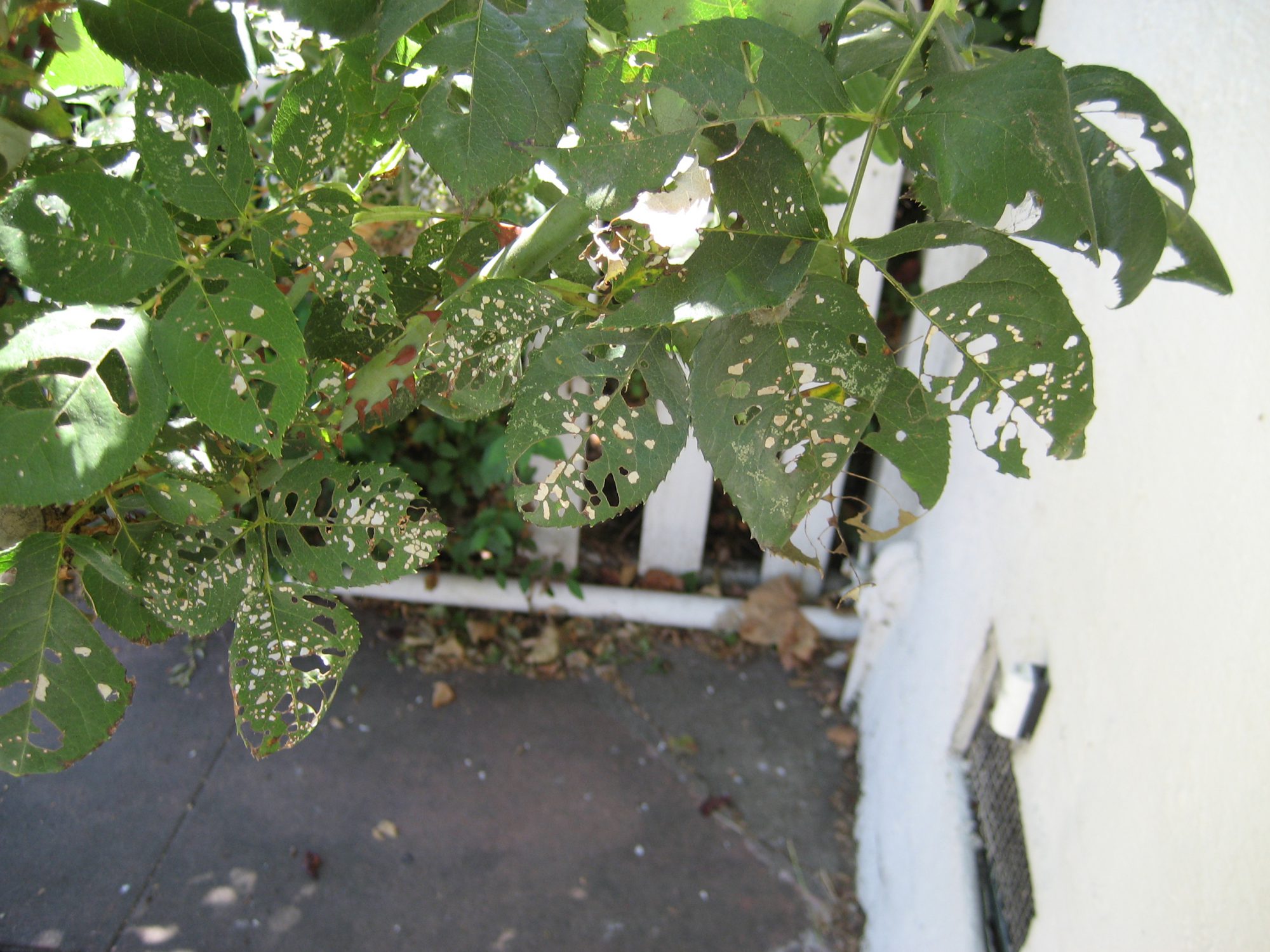In the realm of plant problems, roses are best known for falling prey to aphids and various fungal diseases. Less common but equally problematic is damage caused by chewing insects. When holes appear in rose leaves, as opposed to the wholesale chomping caused by deer damage, a gardener may suspect one of two likely culprits.
The most common rose-munching insect in our area is the “rose slug”, a lime-green worm (larva) which can be found on the undersides of rose leaves in spring and summer. The damage it causes begins as a delicate “skeletonizing” of leaves, in which small holes appear between the veins, giving a perforated, lacy appearance. As the insect grows to its full, 3/4″ length, the damage progresses to more indiscriminate consumption. Finally, the creature pupates in the ground and emerges as a wasplike, flying adult, ready to start a new generation. There are several generations each year.
The adults are referred to as sawflies, due to the serrated appendage on the female’s abdomen, which she uses in egg-laying. They are not easy to recognize and impractical to trap, so treatment involves dealing with the larvae directly. Recommended rose slug eradication measures include hand-picking and pyrethrin spray. Because the pest is not “lepidopterous” (i.e.a moth or butterfly), Bt. caterpillar sprays will not work.
Holes in rose leaves can also be caused by other agents. Neat, round holes about 3/8″ across may appear singly or in groups, with the damage always starting at the leaf edge. These are caused by female leaf-cutting bees, which resemble honeybees, except that they store pollen on the underside of the abdomen instead of in “pollen baskets” on the legs. They often nest in natural hollows in wood or underground cracks, and line their nests with the cut pieces as a food source for their young.
There is no practical way of dealing with this bee damage, other than encasing the entire plant in fine netting, so focus instead on the charming industry of the mother bee, and how the damage to your rose bush pales in comparison. However, leaf-cutting bees occasionally burrow into the cut ends of rose canes to nest, causing the attached shoots to wilt and die. Any canes so affected should be cut well below the wilting and disposed of. You can prevent this damage by applying Elmer’s or similar glue to the cut ends of the canes.



